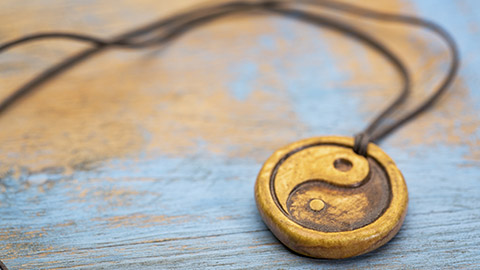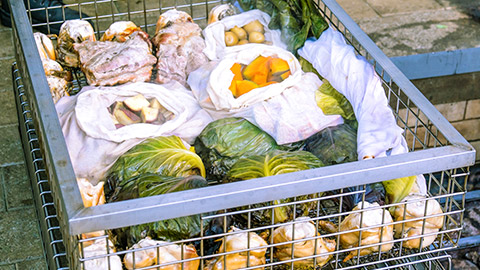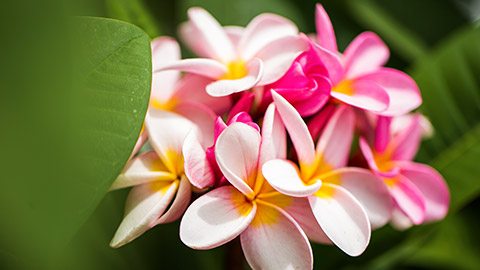According to the World Health Organisation, WHO (1948), “Health can be defined as a state of complete physical, mental and social wellbeing.”
Models of health provide us with a framework (a way of thinking) about health.
They are in place to help us to:
- understand what it means to be healthy
- understand behaviours around our health
- understand the causes of illness and disease
- deliver healthy services to tamariki and whānau
- predict and explain a change in one's health
- guide us with advice for health promotion and disease prevention
- understand different cultures' ideas of health
- become culturally sensitive and respectful.
When we look at models of health concerning the children in our care, we consider things like nutrition, hygiene, physical safety, emotional safety, cultural, and cyber safety. The government's 2017 Te Whāriki also points out that children’s wellbeing has to be viewed from a holistic point of view, where both mental and physical health are considered.
These ideas are reflected in the Māori frameworks, Te Whare Tapa Whā and Te Wheke, the Samoan model – Fonofale, and many other global cultures, including the ancient philosophy of Taoism in Chinese medicine.

The yin-yang symbol holds its roots in Taoism.
Although there are many approaches and models of health, because of the importance of cultural competency and New Zealand's rich cultural heritage, the Early Childhood sector focuses on the Māori and Cultural models of wellbeing. These ideas look at our health holistically — from a combined view of a person's physical, spiritual, mental, and social elements rather than only looking to 'fix' their mind to make them happy and their bodies to make them healthy.

One way to enjoy each other's cultures is by sharing traditional foods, or kai. The Māori hāngī is often celebrated with whānau and community.
Health as seen through a cultural lens
A person’s culture affects their ideas about health. Your beliefs probably started with your family and are strongly held. Remember that other people may have grown up with very different ideas about things you didn't even realise could be thought about differently!
Activity - flip and reflect
The following cards provide subjects to think about when considering the many approaches to health and wellbeing.
- Use the arrows to progress through the cards.
- Take time with each card
- Start with just the single word on the front of the card and consider your own thoughts about the subject.
- Flip it and reflect (using information you already know) on how various cultures may approach these concepts.
- Search the internet to learn more about specific cultural approaches to the subjects on the cards if you like.
The more you know, the better conversations you can have with your tamariki and their families.
Examples of cultural models
You already have some knowledge of the most common cultural models of health used in ECE within Aotearoa, NZ. Let's see how much you remember before we go into more detail in the following subtopics.

Models of health used in ECE Aotearoa
- Te Whare Tapa Whā — Four-sided House - Holistic health
- Te Wheke — The Octopus - Family health
- Kakala — A garland of flowers - Connection and participation
- Fonofale — Fale - Holistic health
Key points:
- This framework is a Māori philosophy of health and wellness
- It was developed by Prof Mason Durrie in 1982
- A whare is a house. In this model, each of the four walls represents an aspect of health
- Tana hinengaro: mental and emotional wellbeing, communication, mind and body connection, thought, feelings, soul
- Tana whānau: Social and family wellbeing, belonging, sharing, community, ancestral links, links to time — past, present, and future
- Tana tinana: Physical wellbeing, growth, and development
- Tana wairau: spiritual wellbeing, faith, communication, life force — individual and collective, unseen energies
- All walls are interconnected and inseparable from each other — the house would fall down if you removed a pillar, pointing out how important it is not to ignore any single dimension of health without it affecting the entire structure.
- The walls must be strong and balanced for the holistic health and wellbeing of individuals, families, and communities.
Activity - Personalising Te Whare Tapa Whā
Take some time to reflect on:
- what you think the relationship is between each of the walls/sides of the whare and home-based education
- what, as kaiako, you will do to embrace this model of health.
Use a forum post to share your thoughts with others. Reply to the main thread with your own thoughts, then read through other people's responses and note down anything that you found helpful but did not include in your own answer.
- This Māori model of health acknowledges the links between mind, spirit, and connection with family
- It was developed by Dr Rose Pere in 1997
- This model uses an Octopus:
- Head – family
- Eyes – total wellbeing for family and individual
- Eight tentacles – dimensions of health
- Spirituality
- Mind
- Physical
- Extended family
- Life force of people & objects
- Breath of life from forbearers
- Unique identities of individuals and families
- Open and healthy expression of emotion
The octopus and its tentacles represent all aspects of Māori life and health as interconnected. It includes whānau, spirituality, ancestors, and history. Each tentacle represents the aspects of a person’s life that will need to be supported in order to sustain balance and wholeness.
To view this through an Early Learning lens, this method involves teamwork and understanding within the workplace towards a shared goal of health and wellbeing for our tamariki, whānau, kaiako and the wider community. Good relationships with parents, students, and community leaders build and strengthen connections within and beyond the home base.
Rose Pere describes Whanaungatanga as “The principle of working together to support each other across all generations”.
Activity - Personalising Te Wheke
Take some time to reflect on:
- what you think the relationship is between the head, eyes, and tentacles of the octopus and home-based education
- what, as kaiako, you will do to embrace this model of health.
Use a forum post to share your thoughts with others. Reply to the main thread with your own thoughts, then read through other people's responses and note down anything that you found helpful but did not include in your own answer.

A kahoa kakala is a special necklace (flower lei) worn at Pasifika gatherings.
The Kakala framework is an indigenous framework of knowledge and wisdom unique to the Tongan process of producing a beautiful kakala or garland.
There are three main processes in forming a kakala, namely toli, tui, and luva.
- Toli – picking of the flowers. This emphasises the importance of selecting and choosing the most beautiful flowers to represent the chain between ourselves, our families, and our communities.
- Tui – threading together the flowers. This symbolizes the interconnectedness of the beautiful flowers (families). Tui underlines the importance of ensuring that each flower is positioned in a beautiful yet organised way.
- Luva – the gifting and giving away of the garland represents a shared goal of community connection.
Activity - Personalising the Kakala model
- Read Setting the Scene: Working with Pacific families
- Reflect on:
- what you think the relationship is between the act of creating and gifting a beautiful flower garland and home-based education
- what, as kaiako, you will do to embrace this model of health.
Use the forum to share your thoughts with others. Reply to the main thread with your own thoughts, then read through other people's responses and note down anything that you found helpful but did not include in your own answer.
If you would like to delve further into how Kakala is used to support tertiary learners, you may like to watch the following video and download the supporting document.
- This model is considered a Pacific Island model of health.
- It was created by Fuimaono Karl Pulottu-Endemann in 2001.
- It uses the traditional Fale (a structure with a floor, posts and a thatched roof) to represent the interactive relationship of the components of health and includes the following:
- Roof — cultural values and beliefs that shelter family life
- Four Posts | Pou — dimensions of spiritual, physical, mental, and other, that connect culture with family
- Floor — the family and environment
- Outside of the Fale:
- Time — the time component in our living history and our past, which impacts people.
- Environment — represents the rural or urban relationship the people have with the land they live on and with.
- Context — the meaning that context has for a person. It may be related to where the person was born, raised, or lives now. It includes socio-political and legal contexts also.
Activity - Personalising Fonofale
Take some time to reflect on:
- what you think the relationship is between the floor, posts, roof, and area around the fale, and home-based education
- what, as kaiako, you will do to embrace this model of health.
Use a forum post to share your thoughts with others. Reply to the main thread with your own thoughts, then read through other people's responses and note down anything that you found helpful but did not include in your own answer.

Each model brings ideas specific to the community it represents. Most ECE centres focus on Te Whare Tapa Whā.
As early childhood professionals, knowledge of these models means that you can support families from different communities, allowing you to provide a holistic approach to the health and wellbeing of our tamariki.
Activity - Develop your own connections
Create two posters for a home-based care centre for models of health. Use Te Whare Tapa Whā for one, and select one of the other models of health we have presented here for the other. Research more about them until you have a clear idea of what they represent and how you can use the methodology to support your work with tamariki.
Then create the posters for your home-based care centre that includes the following:
- A description of the model.
- How the model came about/who developed it?
- What sort of health issues could the model be used for?
- Any advantages or disadvantages of the model.
Lastly, create a journal post of your work and publish it to share with your class. Take a look at the work of your peers, and place respectful feedback with your thoughts.

